Last month we spent a weekend in Vermosh, a charming little village in Albania, close to the Montenegrin border. Vermosh is a real paradise, first of all for hikers, but also for nature lovers who are interested in a quiet and relaxing stay in the wild nature of the Albanian Alps.
And it is so close to Podgorica!
Nowadays, there is no need to pass the Albanian border at Božaj/Hani i Hotit – you can also take the newly built road from Dinoša through the Cijevna/Cem canyon to the Albanian border at Grabom, which is at a 25 km distance from Podgorica. This joint Montenegrin-Albanian border crossing was opened last year, but it is hardly used and the border police are kind – but slow, as for registration they are still using hand-written lists.
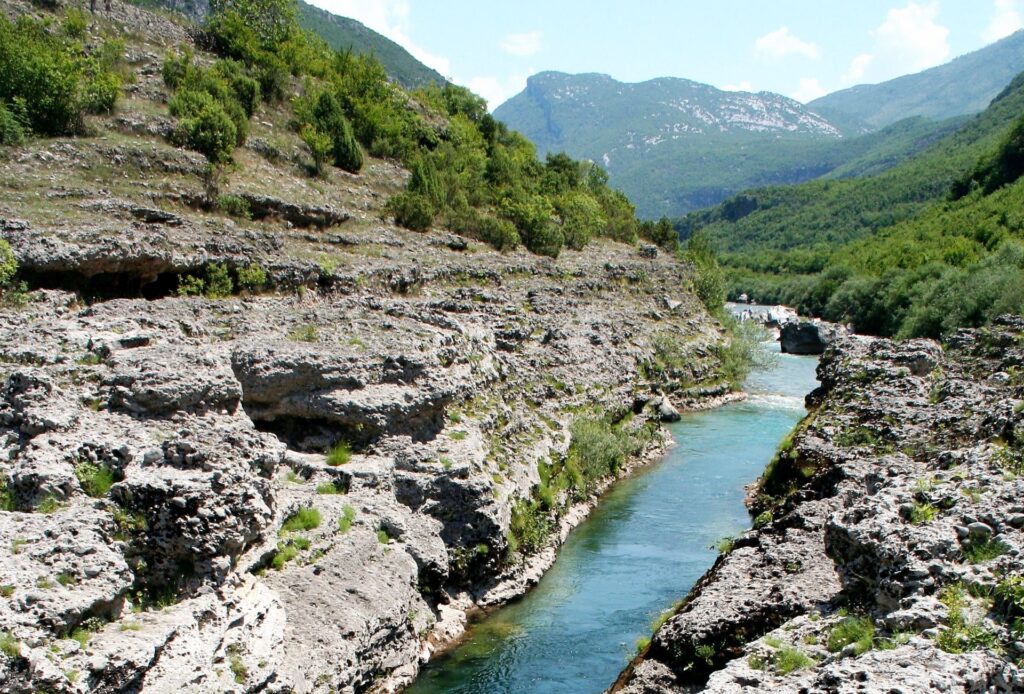
By the way, the Cijevna or (in Albanian) Cem canyon is the deepest in the borderline area, where the right bank is over 1200 m deep. It is particularly beautiful in spring time when the banks are covered by flowers and rare plants.
During the summer, the canyon is also a favorite bathing place of Podgorica residents. The emerald green river is perfectly clean and transparent. On the river banks you can find picturesque ruins of watermills, old stone houses and small pebble beaches, while wild fig and pomegranate trees stick to the canyon’s bluffs.
A few kilometers after the border, we arrived at the junction with the Kelmend road, an adventurous road through the mountains, with many curves. It was opened in October 2016 and passes through the most beautiful region of the Albanian Alps or Prokletije (Accursed Mountains), as they are called in Montenegro.

We turned left at the junction and soon reached Tamarë, the administrative center of the Kelmend region. The name of the village comes from Tamara, the name of the wife of the Shkodra Vizier who ordered the construction of the Vukli bridge on the Cem river in the second half of the 18th century. The bridge was given her name and the village was called the same. Tamarë has around 500 inhabitants. A modern central square of hewn stone with shops, pubs and restaurants around welcomes visitors. The weather was sunny, the open-air terraces were crowded and we took a break for a cup of coffee (€ 1.00).
The distance from Tamarë to Vermosh is 35 km only, but we took our time: there were many beautiful places to explore along the road.
By the way, if you travel with a camper van, there is a new camp site along the road: Camping Selca – it looks quite good!
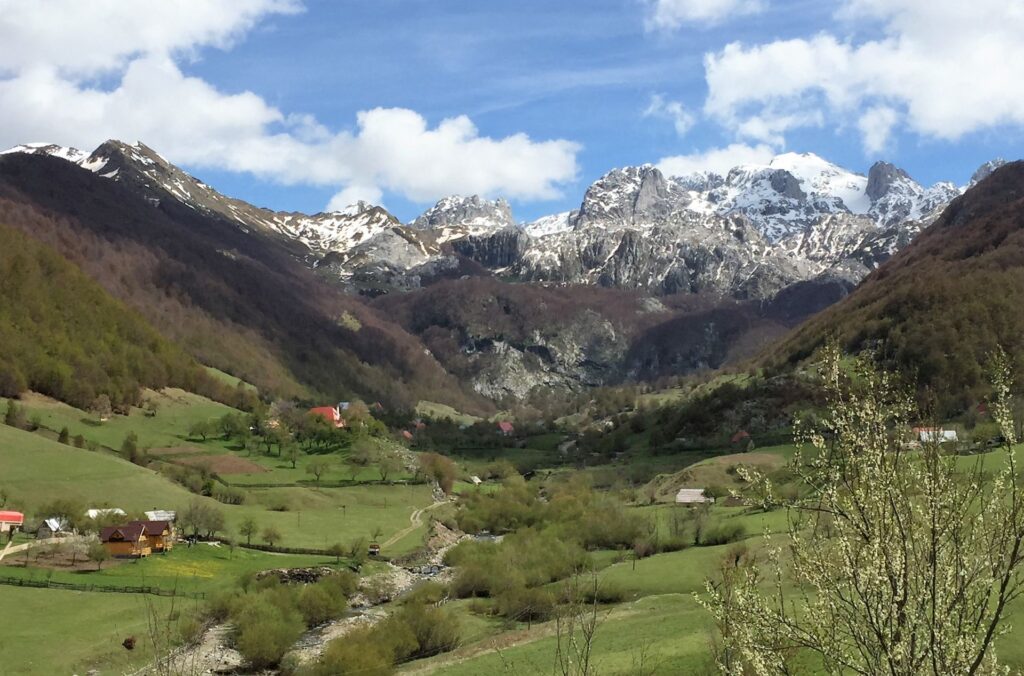
We made another stop at Lepushë, a mountain village situated at an altitude of around 1200 m. It is named after a yellow-flowered plant that grows in the area.
Lepushë is surrounded by high peaks, pastures and forests. A perfect place for a thrilling hiking tour through the mountains. Several info-boards provide information about guesthouses and campsites and a good hiking map with numerous trails in the Kelmend region is also available.
My tip: Guest house Alpina, owned by Luidj Cekaj, who is also an experienced mountain guide.
We continued along the Kelmend road until the next junction, where we turned left to Vermosh – a dead-end road. Turning right would take us to the border at Grnčar, near Gusinje/Plav and further to the Prokletije National Park.
Passing along the huge river bed of the Vermosh river, we admired the high mountain peaks of the Prokletije and the unspoiled nature around us. There was not much water in the river (see picture 1), but it was clear that its current is extremely turbulent between winter and spring. Now we only saw people crossing the old bridges over the stony river bed with horses, sheep, tractors or even cars.
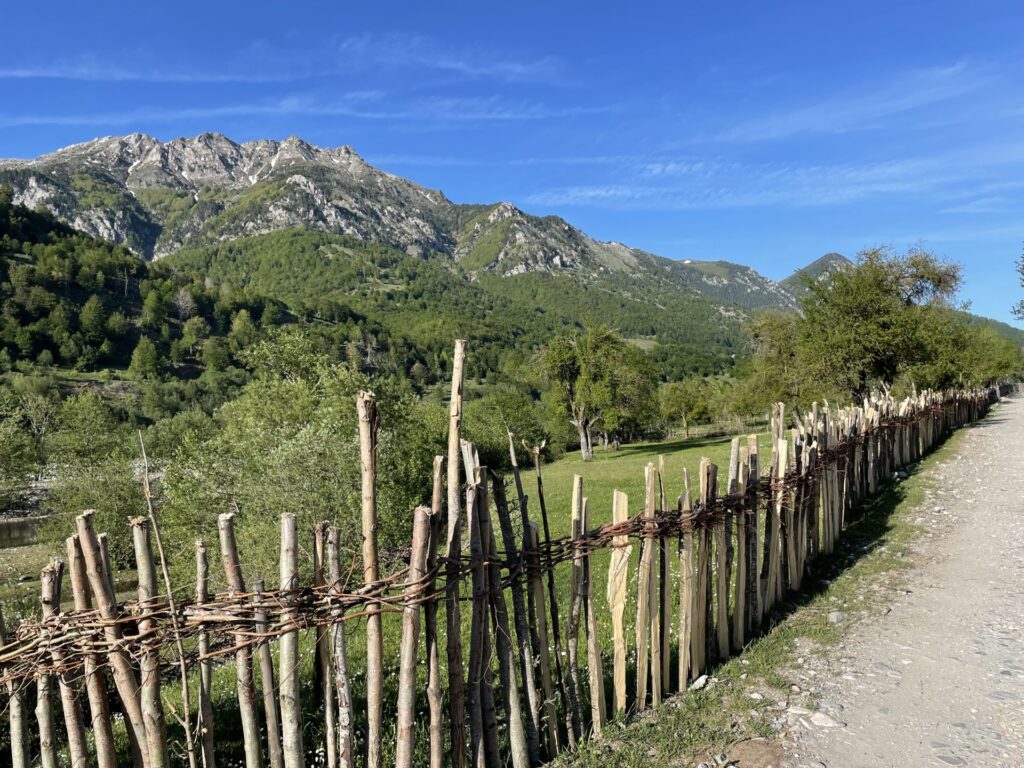
The Vermosh River Valley is one of the 11 valleys in the Albanian Alps. It is interesting to know that the Vermosh River is the only river in Albania that does not discharge into the Adriatic Sea and unlike other rivers, it flows from West to East. With its two tributaries of Lepushë and Greben, it is quite important in the European context because it flows into the Danube.
What else do we know about Vermosh? Well, it started being settled in the mid-19th century, first for the 4-6 months of spring and summer, as the winters were really harsh (up to 2 m of snow). Almost all inhabitants belong to the highlanders, Catholic Malisores, and the mountain tribe of Kelmendi.
After the fall of communism, the inhabitants destroyed everything that reminded them of the past: cooperative farms, schools, public buildings.
At that time, many people left the region; they emigrated to the USA, Western Europe or Italy. Nowadays, the regional economy is based mainly on agriculture, immigrant remittances and tourism. But people started to return to the village. They do not only deal with agriculture and cattle breeding, but have also opened family-run guest houses and bars, and work as guides for hikers and horse trekkers coming from all countries of Europe. Several buildings in the center of Vermosh have been renovated and the village looks quite nice now.
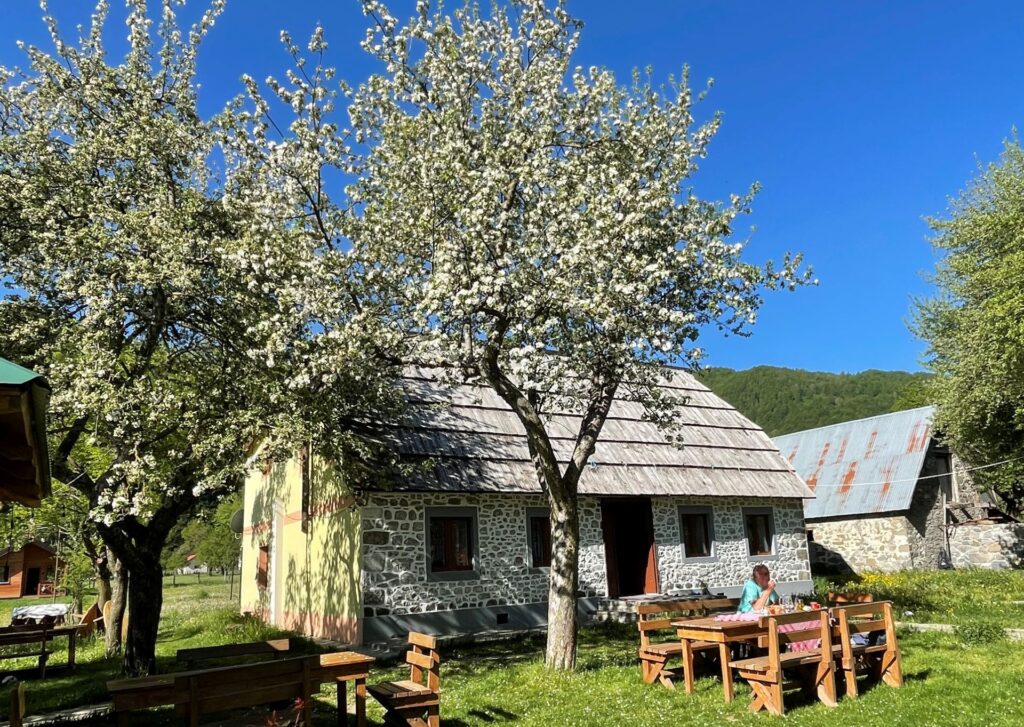
We passed the village center and soon reached our accommodation – Bujtina Peraj. This guesthouse also disposes of a few wooden bungalows, but we preferred to sleep in the farm house itself. The room was simple, but clean and nice, with a comfortable bathroom.
Bujtina Peraj appeared to be a good choice!
The meals were served in the sunny orchard in front of the house. A calm and tranquil place, where you could listen to the birds and enjoy the silence. Fruit trees were still blossoming and the meadows around the house were covered with flowers.
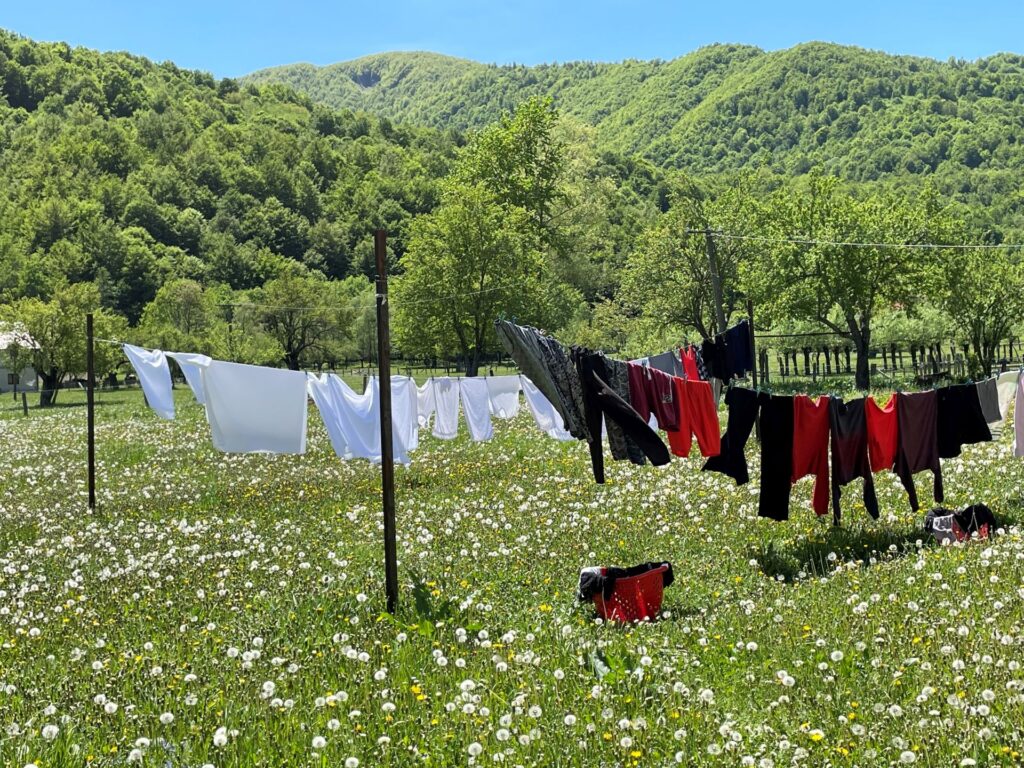
Lunch was typical for this area: people are self-sufficient and everything is home-made. Baked ham, white cheese, fried potatoes and a delicious salad made of tomatoes, cucumber and lettuce. Believe me, tasting this salad cannot be compared with any products bought in the supermarket or even on the green market.
How do you spend the weekend in Vermosh when you are not young and fit enough to make strenuous hiking tours in the mountains? No worry, we strolled through the area, exploring the banks of the river and the mountain brooks around, we had a coffee in the local pub and we enjoyed just sitting in the courtyard and talking to one of the hosts, a young woman who spoke fluently English, and her cousin, 12 years old, who had learned English at school and on TV.
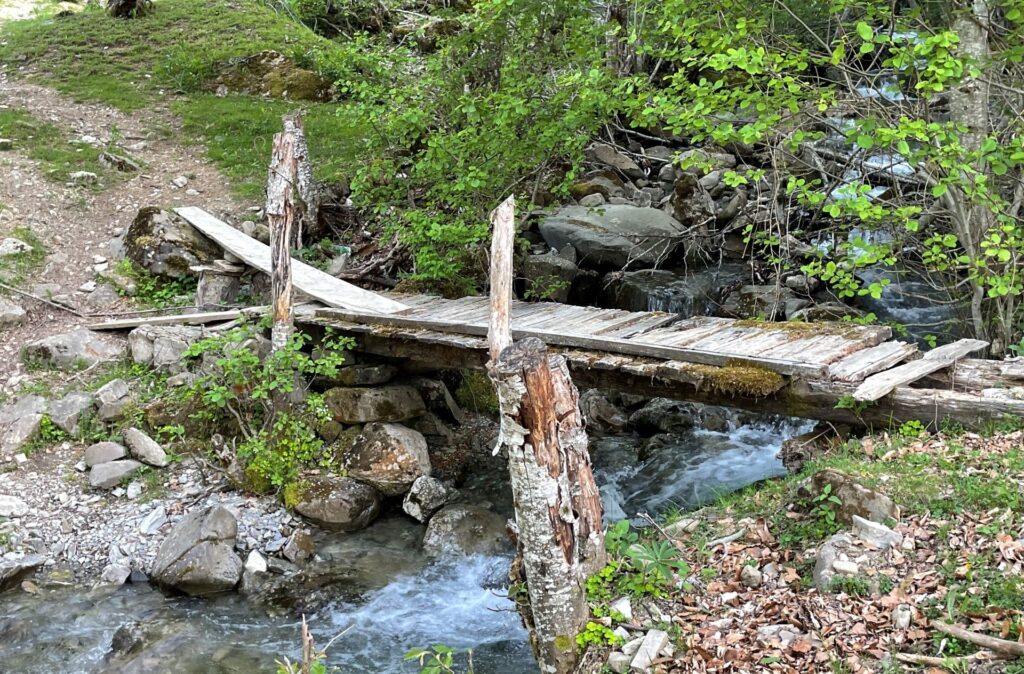
On our way to Gusinje (7 km), we stopped at the wooden bridge and took a look at the Vermosh canyon with its pale blue water. It was quiet at the border crossing and we continued to the springs of Ali Pasha. Although the surroundings of Gusinje – especially the Ropojana valley – have already been spoilt by uncontrolled building, Ali Pašini Izvori is still an amazing place to visit.
These 25 springs, at an altitude of about 925 m above sea level, are situated at the foot of the Prokletije mountains. Depending on the season, 3 to 9 m3 of water per second flows through the springs, forming altogether the Vruja river. There is also an old stone mill here, which has preserved its ancient wheat-grinding mechanism to this day.
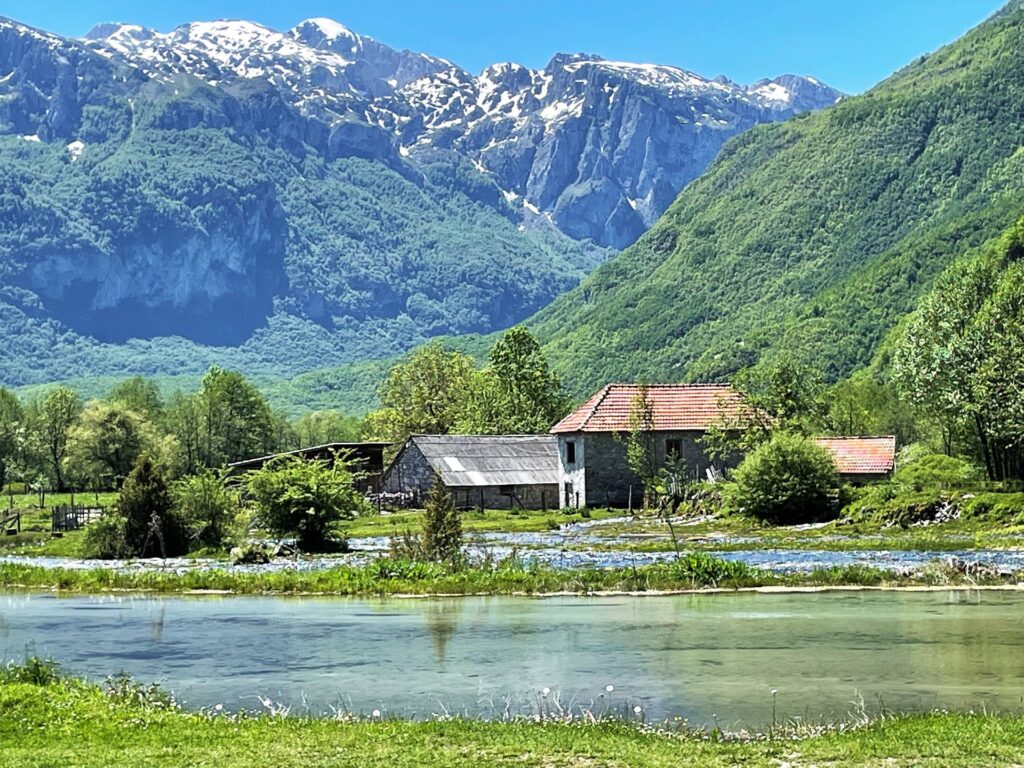
The springs have had different names over the years. Firstly, they were called Vrulja, then Vrela, after that Savini izvori. Later, the name was changed to Gusinjski Springs, and today they are called Ali Pasha Springs. They got their latest name after Ali Pasha Shabanagaj, who governed the area around Plav and Gusinje a long time ago.
Of course, if you have time enough, you can also visit Plav and its beautiful Lake or the picturesque Grebaja valley, which is the starting point of many interesting hiking and mountaineering tours.
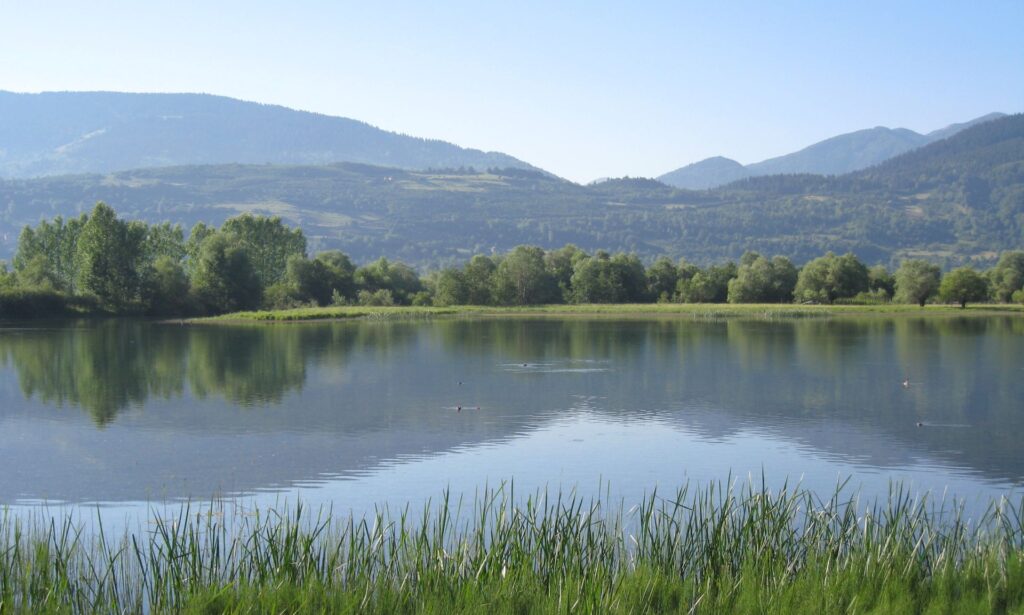
Do you want to make a round trip? Then return to Podgorica the other way round, through Andrijevica and Kolašin (150 km). But be aware: this trip will take you at least three hours.
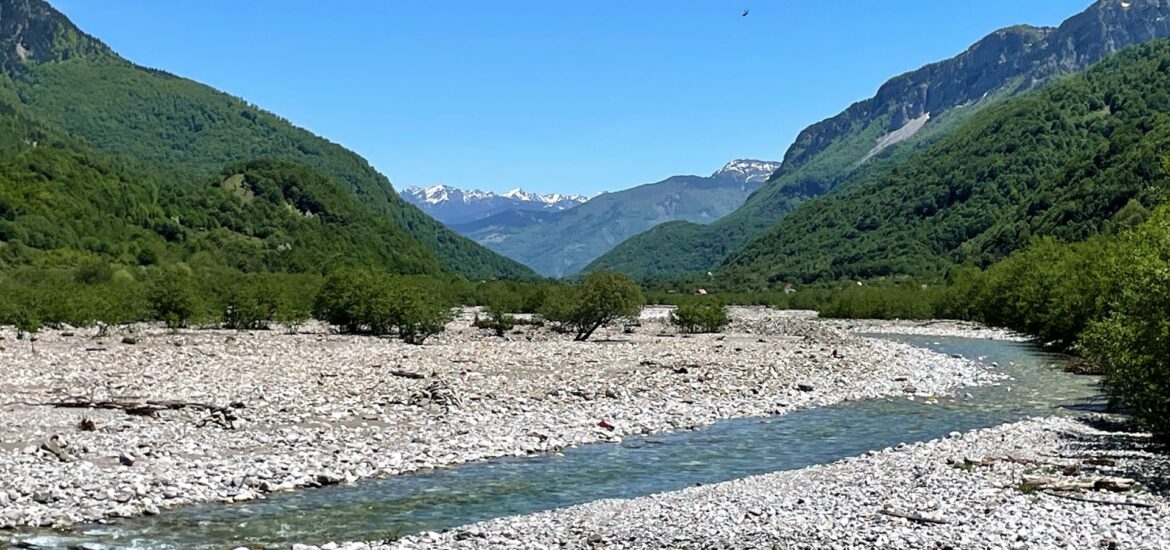
This looks like a wonderful weekend trip. I love reading all your travel articles of Montenegro and the neighboring countries. Thank you for sharing.
I am from one of the villages you blogged about (Dinosha). I live in Chicago and I visit Dinosha nearly every year and I found your blog after googling about my village out of curiosity one time in fifth grade. You are great at entertainingly teaching people about the beautiful territory of Montenegro, even the people who are from there themselves learn a lot from you. Keep it up!